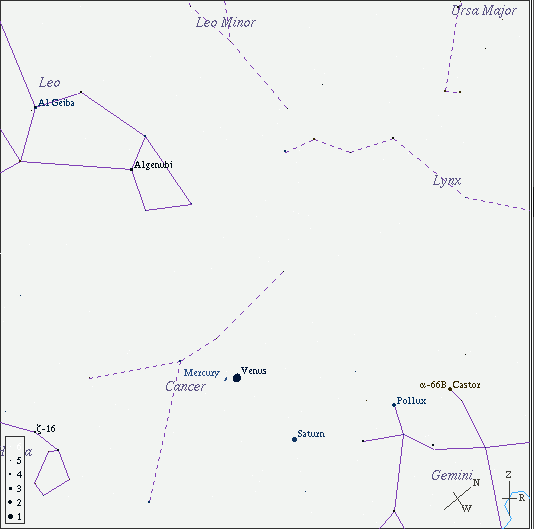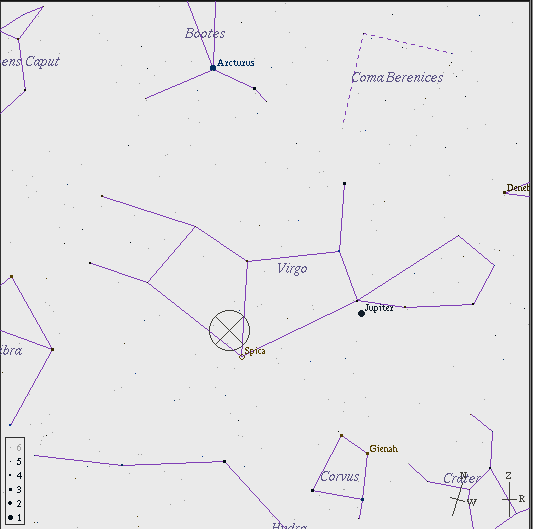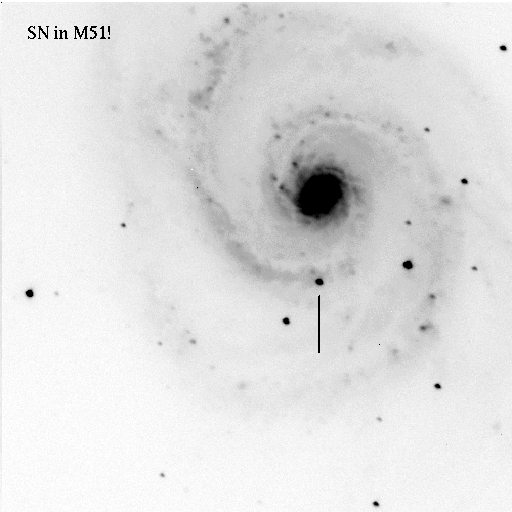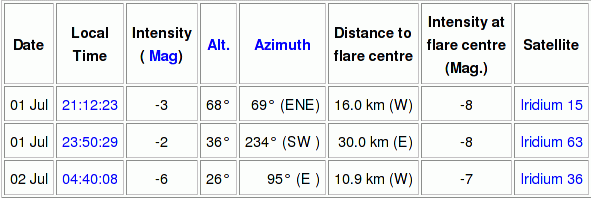
You can find this page on the Internet at
http://spiff.rit.edu/richmond/ritobs/public/jul01_2005/jul01_2005.html
The targets for tonight are:
Saturn, Venus and Mercury lie close together tonight. As the Sun sets, they will all be very low in the western sky:

Venus will be very bright, as usual. The real challenge will be to see Saturn and Mercury, each of which is about magnitude 0.1 tonight. Can you do it?
On July 4, 2005, a portion of the the Deep Impact spacecraft will smash into Comet Tempel/1. Astronomers hope that the collision will blow material hidden under the crust of the comet out into space, where instruments aboard the spacecraft -- and on telescopes watching from Earth -- may be able to see it. It may give us a chance to measure the chemical composition of a comet's interior.
We will try to see Comet Tempel/1 tonight, even though it will be very low in the sky and rather faint. The comet will be just north of Spica in Virgo, at RA = 13:33:56 and Dec = -08:41:41.

You may prefer to look at a prettier finding chart taken from the amateur astronomer's section of the official NASA Deep Impact mission site .
Although long exposure photographs of the comet show a beautiful coma and tail, we will probably be lucky to see the comet at all in our telescope, since it will be so low in the sky and visible only briefly after sunset. Still, we'll try!
Just a few days ago, German astronomer Wolfgang Kloehr noticed a new object in pictures of the galaxy M51 which he took with his 8-inch telescope. Other astronomers soon confirmed that it was a supernova, a massive star at the end of its brief life which explodes violently. Here's a chart showing the location of the supernova:

This is the first supernova to be seen in M51 since 1994, and should rise to become one of the brightest in the decade; it may reach twelfth magnitude, making it barely visible to the eye in small telescopes. We'll take a peek at M51 in our telescopes if conditions permit, even though the supernova has not yet reached maximum brightness.
For more information about this exploding star, see
There are some satellites of Earth for us to view tonight, too. I took the following information from the Heavens Above satellite prediction site.

